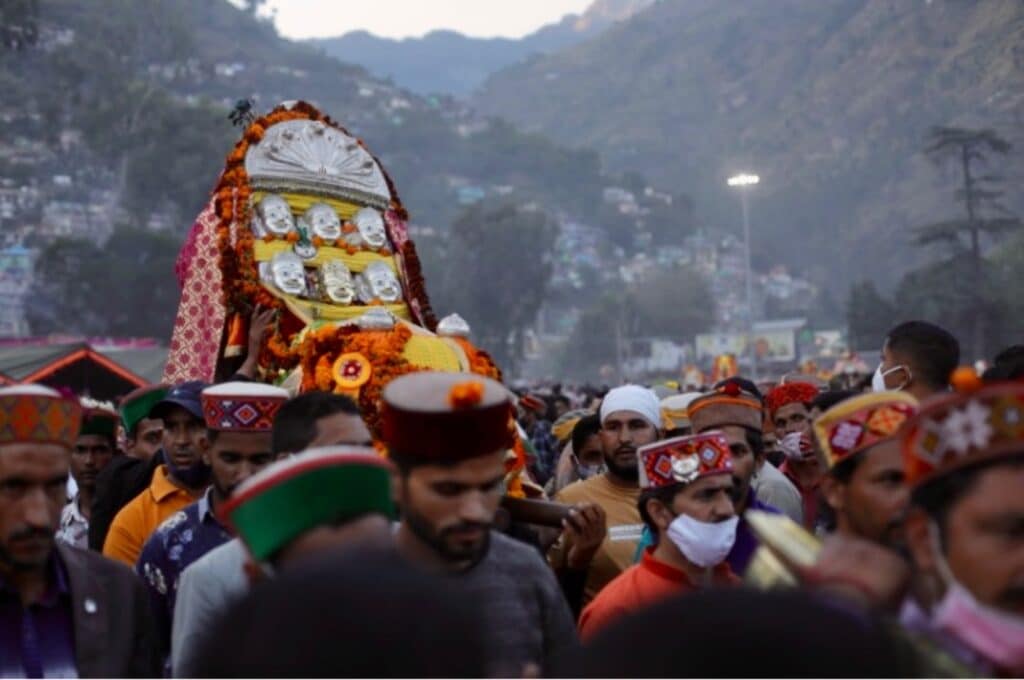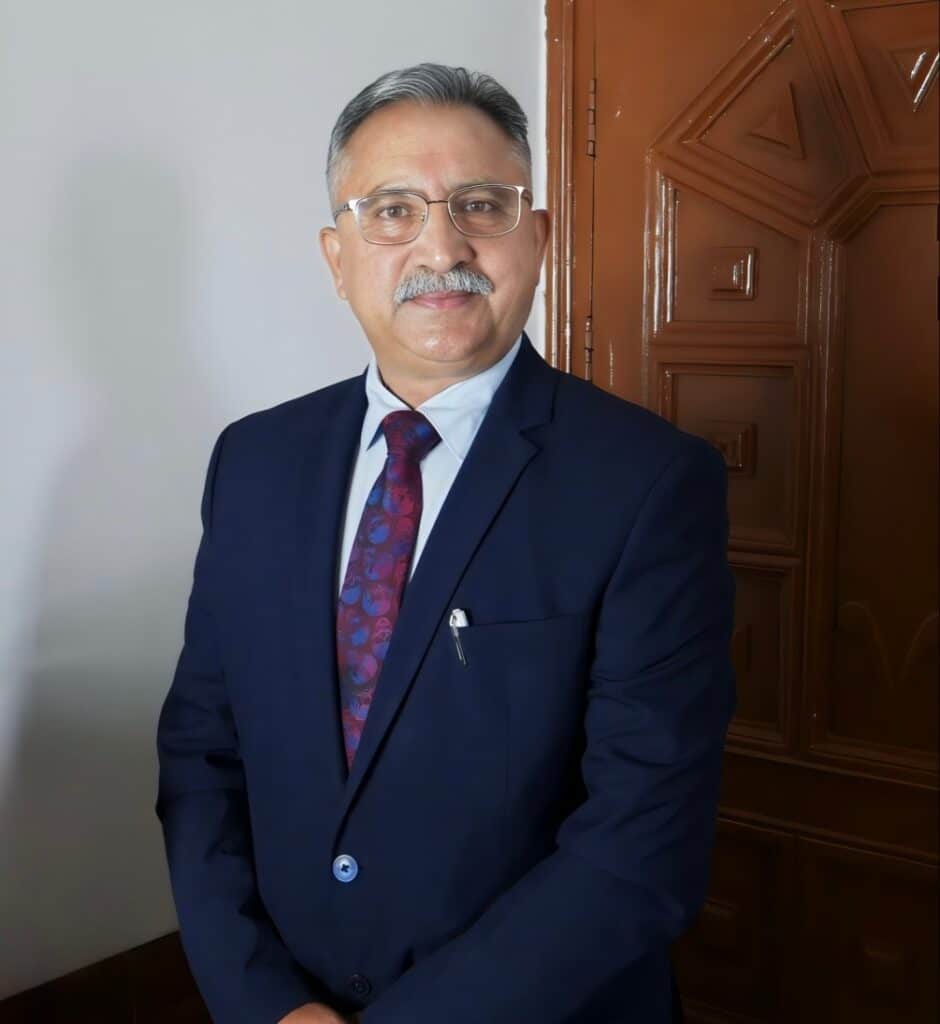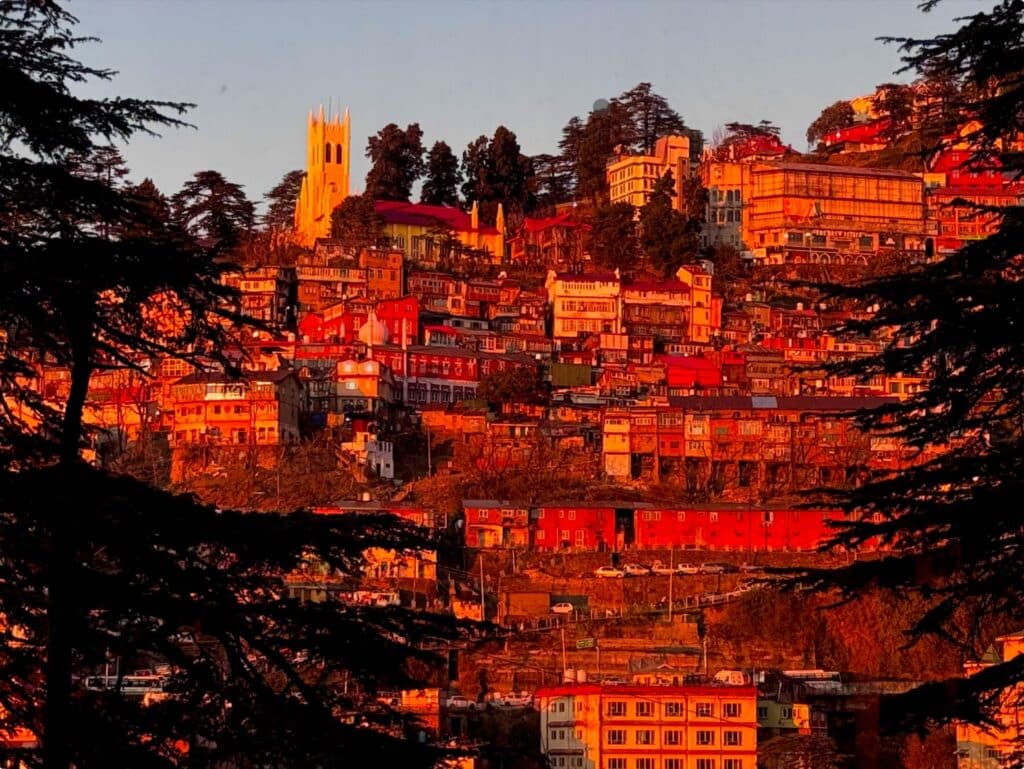Himachal Pradesh, often referred to as “Dev Bhoomi” or the “Land of Gods,” is a region where the divine and the earthly intertwine seamlessly, is celebrated for its breathtaking landscapes and flourishing apple orchards. The state’s apples are renowned worldwide for their exceptional quality, contributing significantly to the local economy. Beyond its natural beauty and agricultural prosperity, Himachal Pradesh boasts a rich cultural tapestry woven with traditions and folklore. Central to this cultural heritage are the local deities, affectionately known as ‘devtas.’ These deities are deeply revered, with each village often having its own presiding devta, believed to protect the community and bless them with prosperity.

The roots of Devta worship in Himachal Pradesh trace back to ancient times, with influences from pre-Aryan traditions. Local legends and folklore suggest that these deities were once human beings who ascended to divine status due to their extraordinary virtues or deeds. Over centuries, the practice evolved, blending indigenous beliefs with elements of Hinduism, resulting in a unique spiritual landscape. The devotion to these deities is vividly expressed during numerous festivals and fairs. One of the most prominent is the Kullu Dussehra, where deities from various regions converge in a grand procession, symbolizing unity and collective faith. Similarly, the Suket Fair, with a history spanning nearly 700 years, showcases the rich cultural heritage associated with Devta worship. The architectural marvels dedicated to these deities are a testament to the region’s rich cultural heritage. Temples like the Hidimba Devi Temple in Manali, built in 1553, Baba Bhootnath Temple of Mandi dating back to 1527 AD, and the Lakshana Devi Temple in Bharmour, dating back to the 7th century, reflect the intricate craftsmanship and deep spiritual significance of these structures. In today’s rapidly changing world, the Devta culture remains a cornerstone of the state’s identity. It offers a sense of continuity and belonging, connecting the present generation with their ancestors. The rituals, festivals, and stories associated with these deities continue to inspire and unite the people, serving as a reminder of the enduring power of tradition and faith. The devta culture is not merely about worship; it’s a way of life that fosters community bonding and preserves ancient traditions. Festivals and rituals dedicated to these deities are occasions for communal harmony, where music, dance, and traditional ceremonies play a pivotal role. The ‘palki’ or ‘rath’ processions, where idols are carried through villages, are particularly enchanting. These processions are believed to move with a divine will, captivating onlookers and strengthening communal ties.
However, amidst this vibrant cultural landscape, a concerning issue has emerged. In recent years, there has been a noticeable rise in drug addiction among the youth of Himachal Pradesh. A newspaper report from May 2024 highlighted that since 2021, at least 58 young individuals have lost their lives due to drug overdose. Regions like Kangra, bordering Punjab, have become hotspots for drug-related activities, with numerous cases reported across various districts. Despite efforts by the state police to curb this menace, drug dealers continue to devise new methods to peddle narcotics, exacerbating the crisis. This alarming trend poses a threat not only to the health and well-being of the youth but also to the cultural fabric of the state. The devta culture, which has traditionally been a source of moral guidance and community cohesion, now faces the challenge of engaging a generation at risk.

Om Prakash Sharma, a former Superintendent of the Narcotics Control Bureau and a passionate social activist, has dedicated his life to combating the scourge of drug abuse in India. His tenure at the Bureau brought him face-to-face with the grim realities of narcotics proliferation and its devastating effects on individuals, families, and society. Today, as a social reformer, he speaks candidly about the crisis, offering not only a diagnosis of the problem but also a roadmap for its resolution.
In a conversation, he paints a vivid picture of a society that once thrived on its joint family systems, rooted in the values of cooperation, discipline, and devotion. “Himachal’s culture was intertwined with Shiva-Shakti, Naag cults, and Rishi traditions,” he says. “Our deities and the discipline they inspired were the foundation of our communities.” But with rapid development, the advent of tourism, and the dissolution of joint families, these traditional structures began to crumble. “The nuclear family model brought isolation. Children no longer sought wisdom from their parents or teachers but turned to the internet. The result? A loss of roots, discipline, and the values that once bound our communities,” he laments.
“The consumption of drugs has reached alarming levels, Instead of seeking peace in temples, meditation centers, or playgrounds, the youth today are drawn to places like Kasol and Malana, pubs, and late-night parties. This shift in lifestyle is eroding our values, culture, and societal fabric.” He attributes this transformation to the influence of Western lifestyles and the allure of quick fixes to life’s challenges. He described how many young people are abandoning traditional avenues of self-discovery, such as spiritual practices and communal activities, for a life of hedonism and substance abuse.A fraction of the youth are no longer listening to their parents, respecting their teachers, or valuing the principles of discipline and hard work. Instead, they are moving toward self-destruction, lured by the illusion of instant gratification,” he remarked. Drawing from his years of experience, he highlighted the emergence of narcotic drugs and psychotropic substances which have exacerbated the drug crisis. “Certain drugs of psychotropic nature are perceived as safe because they are prescribed by doctors for some certain diseases,” he explained. “But looming danger of these substances, for instance, is 50 times more fatal than heroin. People don’t realize how addictive these substances are.” He pointed out that this misconception of safety is not unique to India but a global issue. “The entire world is grappling with this problem. The shift from traditional narcotics to new synthetic drugs is creating a crisis of unprecedented scale.” He believes that the family unit plays a pivotal role in preventing drug abuse. “Parenting doesn’t end with giving birth,” he said. “It begins afterward. Parents must invest time in their children, monitor their behaviors, and build trust. They need to be vigilant about their children’s friends, habits, and activities.” He stressed that the formative years between ages 12 and 18 are critical. “This is the most vulnerable period in a child’s life, If we fail to guide them during this time, the consequences can be devastating, given the easy availability of substances.”
He also emphasized the need for a collective approach within communities. “We need to rebuild the joint family system, where everyone looks out for one another. If your neighbor’s child is at risk, it affects your child too. Drug abuse proliferates rapidly—it doesn’t respect boundaries.” India’s geographical location makes it particularly vulnerable to the drug trade. He highlighted the influence of neighboring drug-producing regions such as golden triangle and golden crescent. “Drugs produced in these areas have a direct impact on our country, from Punjab to the Northeast,” he said. “We must address these cross-border issues with urgency and coordination.” He also pointed out how the neglect of one region can have a cascading effect on others. “If something is wrong in Punjab, Himachal Pradesh must take note. Similarly, if there’s an issue in Himachal, Punjab must act. Therefore regional level coordination is also urgent to tackle this problem. The fight against drugs is collective—it requires cooperation across states and regions.”
During his tenure with the NCB, he led successful operations that reduced drug production by 60% and dismantled several international drug networks. But after 2007, these efforts dwindled. “The state government failed to take ownership. Cultivation is their responsibility, yet they let it continue unchecked,” he asserts. Foreign drug networks capitalized on the region’s isolation and economic vulnerabilities. He recounts how international traffickers, including Israelis, Italians, and Austrians, collaborated with local communities, offering money and employment in exchange for cultivating cannabis. Even the revered Devta Committees, guardians of Himachal’s spiritual heritage, were manipulated. “They used the name of deities to protect illegal cultivation, driven by economic desperation,” he says. He recounts an incident in Malana, where the Devta Committee petitioned the government to halt anti-cannabis operations. “They claimed it was for religious purposes, but the reality was economic. The foreign seeds they cultivated had nothing to do with tradition,” he says.
For him, the solution to this crisis lies in reconnecting with India’s spiritual and cultural roots. “The answer is Dharma,” he asserted. “Whether it’s a temple, mosque, gurudwara, or church, these are sanctuaries where individuals can reflect, find discipline, and reconnect with their inner selves. Spirituality teaches us to live with purpose, human sensitivity, respect others, and value life.” He emphasized that spirituality is not merely about rituals or dogma. “It’s about fostering a disciplined and balanced lifestyle,” he said. “When you love yourself and others, you create a society where everyone blooms. This love and respect begin at home and extend to the community, creating a ripple effect of positive change.”
According to him, spiritual leaders have a crucial role in addressing the drug crisis. “Saints and spiritual leaders are like gods—they give without expecting anything in return. Their influence can inspire younger generations to adopt a disciplined and healthy lifestyle,” he said.
He urged society to support these leaders in their outreach efforts. “They can guide people toward spirituality and self-awareness, fostering a culture of respect and discipline. This is essential for creating a drug-free society.” While he acknowledges the critical role of society, he also emphasized the responsibility of the government. “The government must take strict measures to control the availability of drugs,” he said. “From drug crop cultivation and distribution to peddling, every aspect needs to be tightly controlled and regulated.” He also called for massive awareness campaigns at the national and state levels. “The Prime Minister has repeatedly emphasized the need for drug awareness. It’s time for state governments to act with the same seriousness,” he remarked.
His vision for a drug-free society is rooted in collective responsibility and action. “The solution lies in temples, meditation centers, sports grounds, yoga classes, and libraries,” he said. “These are places where individuals can discover themselves, build discipline, and learn to respect others.”
He also stressed the importance of drastic measures to curb the drug culture. “We can’t afford to delay any longer. The time for action is now. From families to communities, schools to governments, everyone must play their part.”
Om Prakash Sharma’s words are both a wake-up call and a call to action. His experiences remind us that the fight against drugs is not just about law enforcement—it’s about reclaiming our cultural and spiritual identity. As he aptly put it, “Together, we can create a society where our youth blooms, free from the shackles of addiction. But it requires every individual to take responsibility and work toward a brighter, drug-free future.”
The solution begins with going back to the deity. This isn’t merely about religion; it’s about rediscovering the sanctity of life, the discipline of devotion, and the strength of shared purpose.
Addressing this issue requires a multifaceted approach. Strengthening cultural education can instill a sense of pride and belonging among the youth, potentially deterring them from substance abuse. Community leaders and elders can play a crucial role by actively involving young people in cultural and religious activities, providing them with purpose and direction.
Furthermore, enhancing support systems, such as counseling services and rehabilitation centers, is essential. Collaborative efforts between government agencies, non-profit organizations, and local communities can create a robust network to combat the drug menace.

A very elaborate insight into the specifics of the lure of drug money , economics and shortcoming in policy and govt apathy in dealing and cracking down on the mafia
Thank you so much Sir for your very insightful response.
A beautiful piece! It’s inspiring to see how ancient traditions can still offer solutions to modern problems like drug addiction.
The idea of involving youth in Devta culture is fascinating. It not only preserves heritage but also creates a sense of community and purpose.
I agree with the article that reviving these traditions can instill discipline and moral values in the younger generation. The Devta culture is not just about rituals; it’s a way of life. Thank you for shedding light on its potential to solve modern challenges.